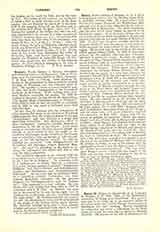

Benno II, Bishop of Osnabruck, b. at Luningen in Swabia; d. July 27, 1088, in the Benedictine monastery of Iburg near Osnabruck. His parents sent him at an early age to the monastic school of Strasburg where the learned Herman (Contractus) of Reiehenau was then teaching. Having completed his education and made a pilgrimage to the Iioly Land, he taught for some time at Speyer in Rhenish Bavaria. On account of his skill in architecture he was made imperial architect by Emperor Henry III and, as such, supervised the construction of numerous castles and churches in the empire. When the Rhine, which flowed close to the Cathedral of Speyer, threatened to undermine the foundation of that building, Benno saved the majestic structure by changing the course of the river. In 1047 he became teacher at the Benedictine school of Goslar (Hanover) and, shortly after, was made head master of the cathedral school at Hildesheim. In 1051 he accompanied Azelin, bishop of that see, on the emperor’s Hungarian campaign and upon his return was made provost of the Cathedral of Hildesheim and arch-priest at Goslar.
In 1069 Benno was consecrated Bishop of Osnabruck, then vacant through the death of Benno I. During the conflict between Gregory VII and Henry IV, Benno for a long time sided with the emperor. When, at the Synod of Worms, in 1076, Gregory VII was deposed, Benno, like most other German bishops, signed the formula of deposition and incurred ecclesiastical excommunication. With some other well-meaning excommunicated bishops, Benno hastened to Italy, where the pope freed them from the ban at Canossa, before Henry himself arrived there to feign repentance. After the emperor’s second excommunication, Benno tried to bring about a reconciliation, but, seeing the insincerity of the emperor, gave up in despair and retired to the monastery of Iburg, which he had founded in 1070. In a little house near the monastery he lived according to the rule of the monks during the week, while on Sundays and holydays he assisted at his cathedral in Osnabruck. Benno’s piety and justice made him much beloved by his flock. Strunck (Westphalia Sancta, Paderborn, 1855) and Heitemeyer (Die Heiligen Deutschlands, Paderborn, 1889) include him in the list of saints. Kerler (Die Patronate der Heiligen, Ulm, 1905) says that he is invoked against grasshoppers, because he once dispersed them by his prayers.
MICHAEL OTT

